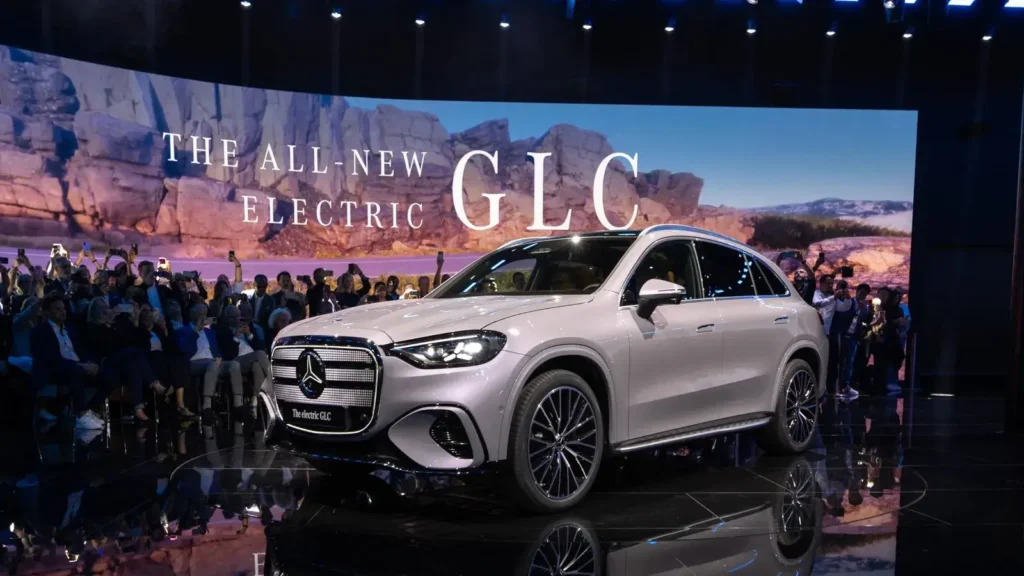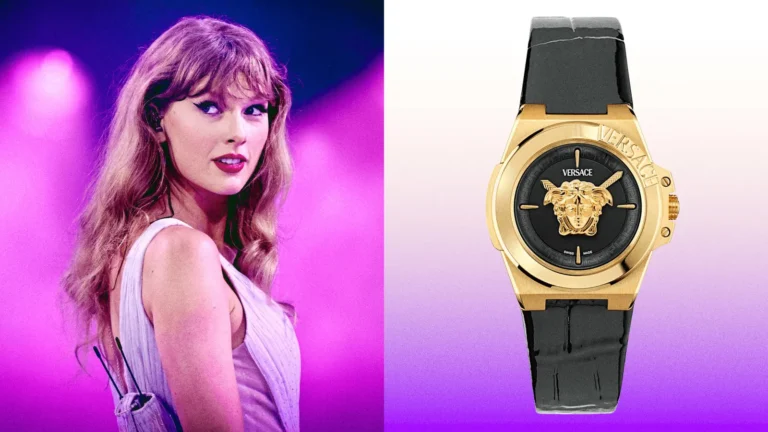Every August, the Monterey Peninsula transforms into a rolling celebration of the automobile. What started decades ago as the Pebble Beach Concours d’Elegance has evolved into Monterey Car Week — a multi-day festival where collectors, brands, and enthusiasts converge for an intoxicating mix of auctions, concours, track days, and private unveilings.
This year, no brand seized the spotlight more decisively than McLaren. The British marque arrived with a slate of world-first hypercar debuts, racing announcements, historic displays, and luxury lifestyle activations that underscored one point: McLaren isn’t just surviving in today’s supercar arms race, it’s redefining its future.
Here’s how McLaren made hypercar history at Car Week — and why these moves could mark a turning point for the company.
The W1: Successor to a Legend
The centerpiece of McLaren’s Car Week was the public unveiling of the W1, a car already being whispered about as the spiritual heir to the iconic McLaren F1.
- Power and performance: The W1 delivers 1,258 horsepower, making it the fastest and most powerful road-legal McLaren ever produced.
- Price and exclusivity: At $2.1 million each, all 399 examples are already sold out, cementing the car’s place as a future collectible.
- Heritage link: Positioned as the successor to the F1 — a car that routinely fetches over $20 million at auction today — the W1 arrives with enormous expectations.
The unveiling didn’t happen at a traditional auto show stand. Instead, VIPs were ushered into Chateau McLaren, a secluded Carmel Valley estate reimagined into a Belle Époque-style temple to the brand. That theatrical backdrop wasn’t just flair. It signaled a shift: McLaren is leaning harder into luxury lifestyle positioning alongside its engineering reputation.
Project: Endurance — A Return to Le Mans Glory
If the W1 was the exclamation mark, Project: Endurance was the underline.
Unveiled at the same Chateau McLaren party, this hypercar marks McLaren’s return to the top class at Le Mans in 2027. It’s an ambitious comeback:
- Historical weight: McLaren won the 1995 24 Hours of Le Mans with the F1 GTR, a feat that cemented its place in motorsport folklore. But the brand has been absent from Le Mans’ top class (now known as LMDh) for nearly three decades.
- Customer program innovation: McLaren is offering a first-of-its-kind ownership experience. Select clients won’t just buy Project: Endurance — they’ll get behind-the-scenes access to the team’s Le Mans campaign, track driving opportunities at world-class circuits, and a direct role in the development and testing program.
This model of hyper-exclusive client immersion could reshape how automakers think about customer engagement. Instead of selling cars as static collectibles, McLaren is selling participation in history.
CEO Nick Collins put it bluntly:
“The opportunity to be one of only a few to own this Le Mans Hypercar and be directly involved in the development and testing program is a very special proposition.”
In other words, it’s not just a car — it’s the ultimate gentleman racer’s package.
Auctioning the Present: Formula 1 Cars for Sale
As if two multimillion-dollar hypercars weren’t enough, McLaren dropped another bombshell: it will auction one of its 2026 Formula 1 cars in collaboration with RM Sotheby’s.
Why does that matter? Because no active team has ever offered a currently campaigned race car to private buyers.
For collectors, the chance to own — and potentially drive — a modern F1 machine is unprecedented. For McLaren, it’s another way to tie its racing pedigree directly to its client community.
Celebrating 30 Years Since Le Mans ’95
Beyond the new debuts, McLaren used Car Week to celebrate a milestone: the 30th anniversary of its 1995 Le Mans win. The commemoration unfolded in several forms:
- McLaren 750S Le Mans: A special edition coupe inspired by the F1 GTR’s victory.
- “States of Endurance” road trip: Specially designed Artura Spider and 750S models touring across the U.S., connecting fans coast-to-coast with McLaren’s racing legacy.
These weren’t just anniversary badges slapped on production cars. They were carefully designed storytelling devices, connecting today’s lineup with one of the brand’s most defining triumphs.
The Quail and Pebble Beach: Icons on Display
Car Week isn’t only about what’s new — it’s also about honoring what’s timeless. McLaren showed up strong at the two anchor events:
- At The Quail: A pair of McLaren Elva and P1 hypercars in historic Gulf Oil livery were shown in the “Evolution of the Supercar” showcase. Both are among the rarest and most valuable McLarens ever built.
- At Pebble Beach Concours d’Elegance: McLaren Racing displayed iconic Formula 1 cars spanning 50 years, highlighted by the legendary 1988 MP4/4 — widely regarded as the most dominant F1 car ever built — which took Second in Class honors.
These appearances reinforced McLaren’s dual identity: road-car innovator and racing titan.
On Track at Laguna Seca

At the Rolex Monterey Motorsports Reunion, McLaren doubled down on its Formula 1 heritage, celebrating the sport’s 75th anniversary by bringing three historic F1 cars to WeatherTech Raceway Laguna Seca:
- 1974 M23/05, driven by Emerson Fittipaldi.
- 1984 MP4/2, raced by Niki Lauda.
- 2024 MCL38/02, campaigned by Lando Norris.
While two cars remained on static display, McLaren Racing CEO Zak Brown took Lauda’s MP4/2 onto the track for exhibition laps — a rare sight that electrified fans.
This wasn’t nostalgia for nostalgia’s sake. It was a vivid demonstration that McLaren’s past and present still belong on the same racetrack.
A Brand Reborn Under New Ownership
Behind the fanfare lies a serious shift in McLaren’s business structure. Earlier this year, CYVN Holdings, an Abu Dhabi-based investment firm, consolidated ownership under a new umbrella entity: McLaren Group Holdings (MGH).
Key outcomes:
- Debt-free balance sheet: After years of financial turbulence, McLaren is now free from the weight of debt.
- Synergy push: MGH plans to further align McLaren’s F1 team with its road car division, leveraging technology transfer and brand crossover.
- Growth in the U.S. market: With more than half of McLaren’s global sales coming from America, the brand is leaning harder into stateside engagement.
As McLaren Americas President Nicolas Brown put it:
“Monterey Car Week is always a great opportunity for us to engage with clients, prospects and enthusiasts alike. The U.S. market is more than half of our global volume, and also a huge amount of our global passion.”
The message was clear: America isn’t just McLaren’s biggest market — it’s the heart of its future strategy.
The Bigger Picture: McLaren’s Three-Part Play
Taken together, McLaren’s Car Week presence felt like more than an event. It was a strategic blueprint for the brand’s next decade.
- Reassert Hypercar Leadership
With the W1, McLaren reminded the world it can still produce headline-grabbing, sold-out hypercars that rival anything from Ferrari, Bugatti, or Aston Martin. - Reconnect with Racing Glory
Project: Endurance and the F1 car displays weren’t just for show — they reestablished McLaren’s DNA as a racing-first company, not just a luxury automaker. - Redefine Client Engagement
By offering unprecedented access to racing programs, auctions of current F1 cars, and lifestyle-focused events like Chateau McLaren, the brand is pioneering a new kind of experiential ownership model.
Why This Matters for the Hypercar Market
The hypercar world is increasingly crowded. Ferrari, Porsche, Bugatti, Aston Martin, and Koenigsegg are all vying for billionaire collectors’ garages. What sets McLaren apart isn’t just speed or design — it’s the fusion of race-bred authenticity with luxury exclusivity.
- Ferrari sells heritage.
- Bugatti sells excess.
- McLaren sells access — to racing, to history, to the inside circle.
That distinction could be the key to McLaren’s long-term relevance in a market where pure performance numbers are no longer enough.
More Than a Car Week Win
McLaren didn’t just show cars at Monterey Car Week 2025. It staged a multilayered reintroduction: a brand free of debt, rich in racing heritage, ambitious in luxury positioning, and bold enough to rewrite the rules of client engagement.
The W1 and Project: Endurance may grab the headlines, but the real story is bigger: McLaren is reinventing what it means to be a hypercar brand in the 21st century.
As Nick Collins put it at Chateau McLaren:
“The U.S. market is more than half of our global volume, and also a huge amount of our global passion…. We just want to do more and more here. So you’ll see a lot more of us in the U.S.”
If Monterey was any indication, that’s less of a promise than a warning shot.
